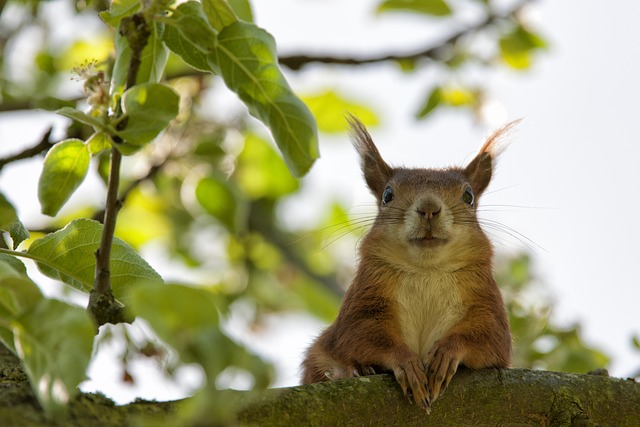Rodents like mice and rats pose challenges due to their adaptability and survival instincts, affecting ecosystems and requiring effective yet eco-friendly control methods. Traditional trapping is less effective over time, leading to a shift towards humane, safe techniques that avoid toxic chemicals and lethal traps. Habitat modification, exclusion, and biological control are gaining popularity for managing rodent populations without harm. Preventative measures such as addressing attractants and maintaining a clean environment significantly reduce the appeal of homes and businesses to rodents, fostering sustainable co-existence with these small mammals.
In the pursuit of harmonious coexistence with nature, eco-friendly solutions for rodent management offer a sustainable approach to dealing with these mammals. This article explores effective yet humane strategies to mitigate rodent infestations, focusing on both environmental impact and human safety. We delve into understanding rodent behavior, comparing traditional methods with eco-conscious alternatives, and providing practical tips for professional rodent removal and prevention. Discover how you can protect your spaces without harming nature’s delicate balance.
Understanding Rodent Behavior and Their Impact on the Environment
Rodents, including mice and rats, are adaptable creatures with intricate behaviors that professionals in rodent removal understand well. They are highly intelligent and quick to learn from their surroundings, which can make traditional trapping methods ineffective over time. This adaptability is a result of their survival instincts and their ability to navigate and find shelter within complex urban landscapes.
Beyond the challenges they pose for professional rodent removal services, rodents also have a significant environmental impact. They contribute to soil erosion by burrowing, disrupt ecosystems by consuming native plants and seeds, and act as disease vectors, transmitting harmful pathogens to both wild animals and humans. Understanding these behaviors is crucial for developing effective, eco-friendly solutions that address their presence in a humane and safe manner.
Traditional vs. Eco-Friendly Rodent Management Techniques
In the realm of rodent management, a significant shift has occurred from traditional methods to eco-friendly solutions. Professional rodent removal no longer solely relies on toxic chemicals and lethal traps, which can have detrimental effects on non-target species and the environment. Instead, eco-conscious approaches prioritize humane and safe techniques that minimize ecological impact. Traditional methods often involve poisonous baits and traps, leading to potential harm for pets, children, and beneficial wildlife. These practices also contribute to environmental pollution and disrupt local ecosystems.
Eco-friendly rodent management focuses on non-lethal strategies such as habitat modification, exclusion, and biological control. By eliminating food sources, sealing entry points, and introducing natural predators or parasites, these techniques effectively manage rodent populations without causing harm. Such methods are not only safer for humans and pets but also foster a healthier balance in the local ecosystem. This shift towards sustainability demonstrates a growing awareness of the interconnectedness of nature and the responsibility to protect it.
Implementing Safe and Humane Solutions for Professional Rodent Removal
When it comes to professional rodent removal, adopting eco-friendly methods ensures a safe and humane approach to dealing with infestations. These solutions prioritize the well-being of both the rodents and the environment, offering a more sustainable alternative to traditional pest control practices. By implementing such methods, professionals can effectively manage rodent populations without resorting to toxic chemicals or harmful traps, which may cause unnecessary suffering and environmental contamination.
Eco-friendly techniques for professional rodent removal include using live traps, which capture rodents humanely without causing them harm. These traps are designed to gently restrain the animals, allowing for their safe release back into the wild or relocation to a different area. Additionally, natural repellents and habitat modifications can be employed to deter rodents, reducing the need for direct interaction and ensuring a more peaceful co-existence between humans and these small mammals.
Preventative Measures: Reducing Rodent Attraction in Your Home or Business
Preventative measures play a crucial role in eco-friendly rodent management, offering long-term solutions for both homes and businesses. The first step in professional rodent removal is to understand and address why rodents are attracted in the first place. Common attractants include food sources, shelter, and water. By securing garbage bins with tight-fitting lids, cleaning up spilled foods, fixing leaky pipes, and sealing entry points like gaps around pipes or wires, you significantly reduce the appeal of your property to rodents. Regular inspections can also help identify potential entry points before they become inviting homes for these pests.
Additionally, maintaining a clean and clutter-free environment is essential. Rodents are excellent climbers and navigators, so keeping items off the floor and storing them in sealed containers discourages them from exploring further. Plants and gardens should be neatly trimmed, as overgrown areas provide cover and potential food sources. These simple yet effective steps empower individuals to take control of rodent management while promoting a harmonious coexistence with nature.
In light of the above discussions, it’s clear that eco-friendly solutions offer a sustainable and humane approach to rodent management. By understanding rodent behavior and implementing safe practices like professional rodent removal services, we can minimize environmental impact while protecting our homes and businesses. Preventative measures play a crucial role in reducing attraction, ensuring a harmonious coexistence with these creatures. Let’s embrace these green methods for a healthier, more balanced ecosystem.
